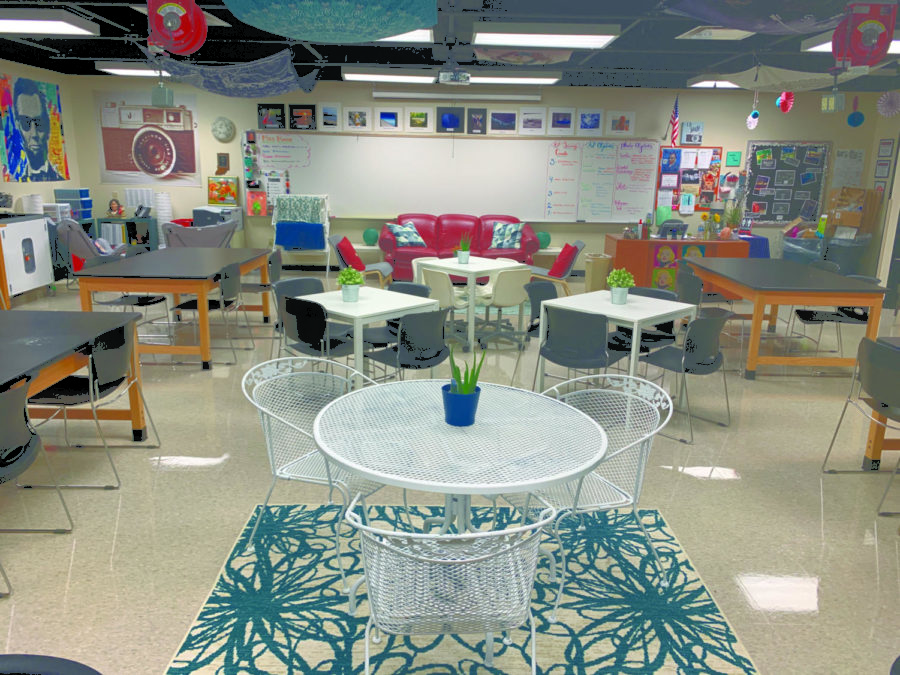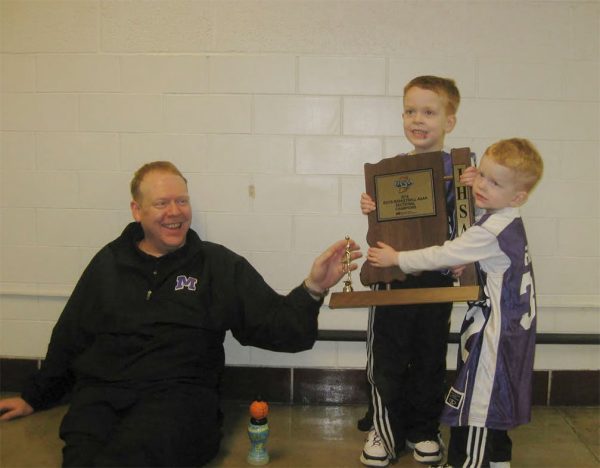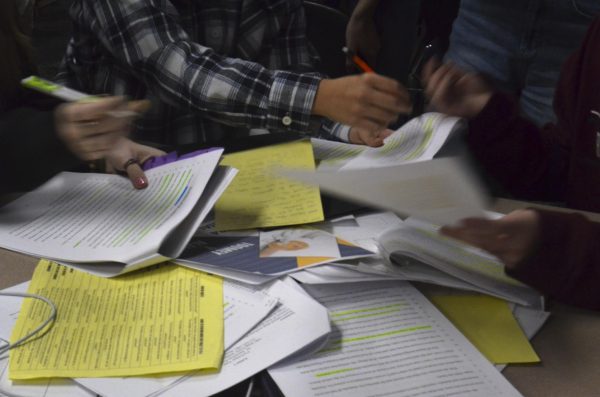Just focus
With disruption around every corner, and only 24 hours in a day, how can students manage to stay focused?
November 15, 2019
The shaken voice on the end of the line belonged to a young teacher in an economically challenged city. As a first year educator, she was struggling to write lesson plans that would successfully engage her students. Frustrated, she called her former professor, Mark Phillips at the University of Massachusetts, for advice.
Phillips decided to assist the young teacher, and headed out to visit her at her school. When he arrived, according to Phillips, the classroom he saw looked like a bad joke.
The room sat in the basement of an old building filled with tall poles and composed entirely of cement. No color, no warmth, no friendly atmosphere. Just an empty interrogation room poorly disguised as an educational environment.
Immediately, Phillips knew that the teacher’s lesson plans weren’t the problem: it was the place the students were expected to learn in.
Six long weeks later, after working for countless hours to make the room more welcoming, Phillips was able to turn the once barren and desolate holding cell into a bright, colorful place of learning, brightly-carpeted, the walls and poles cheerfully painted, with photographs, paintings, and wall-hangings everywhere.
Not long after making these changes, the teacher noticed an immediate, positive reaction from the students. They seemed incredibly motivated, had a more trusting relationship with the teacher, and acted happy to come to school. The difference was startling…
It’s one of the areas that education researchers can overlook: how a positive and uplifting school physical environment can be instrumental in the success of its students.
Kristine Hendrix, an English teacher at NHS, knows this, and she tries to make her classroom a peaceful environment.
“I literally could see students walk into my classroom and take a deep breath, knowing that they were in my class,” Hendrix said. “I even had students tell me that it was the only part of the day where they felt comfortable and relaxed.”
Hendrix keeps her classroom faintly lit, with warm fairy lights strewn across the ceiling and blanket-covered couches in the corners.
“Some of their anxiety melted away,” Hendrix said. “When I got that reaction from my first time putting any time into it, I knew that it was something I needed to think about.”
The comfort of her students is crucial to Hendrix. Because of that, she makes her classroom surroundings a priority.
“I put time into my classroom,” she said. “So they automatically assume that I’m dedicated to them too.”
Although distracting noises and bright, headache-inducing lights can be detrimental to a student’s learning, a room with the opposite problem can be just as harmful.
“I remember when I was in school, and if a room would get really unusually quiet, sometimes I would start feeling really anxious,” Hendrix said.
Kelsee Keitel, a counselor at NHS, feels that music in the classroom can improve the mood for students.
“There are some studies that show that listening to classical music or certain types of music can help with focus,” Keitel says. “I know when I was a student, I really enjoyed it when my teachers would play music while we were working.”
Recognizing the need for a peaceful environment, Hendrix also chooses to play music in her classroom.
While researchers are still examining how listening to music while studying or doing homework affects students, teachers like Hendrix believe it can drastically reduce stress and help to maintain focus.
“I think [music] allows people to feel more comfortable,” Hendrix said.
However, if music can help to maintain focus, can it also pull attention away for someone trying to concentrate? Keitel says when she meets a student, it’s one of the questions she considers.
“I never know when they’re listening to music or not,” said Keitel. “So when I’m meeting with a student, I just don’t know how engaged they are with me.”
Julie Detrick, a special education teacher at NHS, agrees that instrumental music can be calming and relieve stress, but she thinks listening to lyrical music while reading can create a distraction for some.
“I do find that music can be challenging if they’re just sticking their ear buds in,” she said. “When we’re working on something independently, I’ll play music from YouTube.”
For Detrick’s students who suffer from hypersensitivity to light and sound, coping with their environment can be incredibly difficult. Because of that, her classroom reflects her concern for an effective learning atmosphere.
“I have a reset space,” Detrick said, “so they know that if they’re having a hard time emotionally, or [are] struggling with something [and] they wanna get upset, then they can go over there and sit.”
For Detrick, the physical environment of her classroom is secondary to the relationship between her and her students.
“It’s particularly challenging,” Detrick said. “You have to work really, really hard at the environment because if I don’t connect with the kids, then we don’t create an environment where they feel comfortable and safe.”
Above all, Detrick uses her position as a teacher to act as an inspiring role model who listens to her students and helps them succeed.
“The main thing is to support, stay calm and offer assistance,” she said.
For students, even the time of day when they are studying can affect how much information they retain. Detrick has noticed a difference in how her students learn since the start time of school was changed this year.
“I think it’s easier in the morning,” Detrick said, “although teenagers are different because they tend to wake up at night.”
Keitel agrees that it’s usually better for adolescents to study at night, however she understands that it does depend on the individual.
“We do know that for the adolescent brain, it works better a little bit later in the day,” she said, “and that’s why we adjusted the start time.”
However, NHS junior Jackie Lawrence finds herself at her least effective when she studies late at night.
“I am more productive after school or in the morning,” Lawrence said.
Despite being aware of healthy study habits, Lawrence is no stranger to another source of distraction: phones.
“I am guilty of being on my phone when I should be studying,” she said.
Phones are a significant part of this generation and according to some research, phone use can interfere with education. Hendrix, however, has a different take.
“I do think social media could be distracting for some,” Hendrix said. “But I also believe that teachers can counteract that by creating engaging lessons and developing lessons with their students.”
The problem of students phone-addiction is a fairly recent issue. However, Keitel thinks it can be an opportunity to teach.
“At my job, I’m allowed to have my phone out and I use it responsibly,” Keitel said. “so in high school, I think it can be helpful to give students the opportunity to have their phones in the classroom.”
But she believes everything has to be in moderation.
“I also totally understand why some teachers would say, ‘Hey we have a strict no phone policy,’” she said, “Because in college some professors will have that too.”
Dr. Jacob Kean, a professor of health sciences at the university of Utah who specializes in patients with communication disorders, agrees with this.
“I think multi tasking is a myth,” Kean says. “So distractions, such as phones, should be expected to compromise a student’s performance in class or an employee’s performance at work.”
Keitel also thinks that there is an epidemic of tired students in this generation, but believes it’s a sign of a different kind of fatigue.
“Students are really feeling the pressure to perform well academically,” she said. “I do think that students are running on low gas tanks.”
The problem of students with low energy has been increasing over time. However, there will always be ways to make education less dreadful and more inviting. And as teachers like Hendrix and Detrick have learned, the walls of the classroom can be one of the most important ways to help lighten the load.














